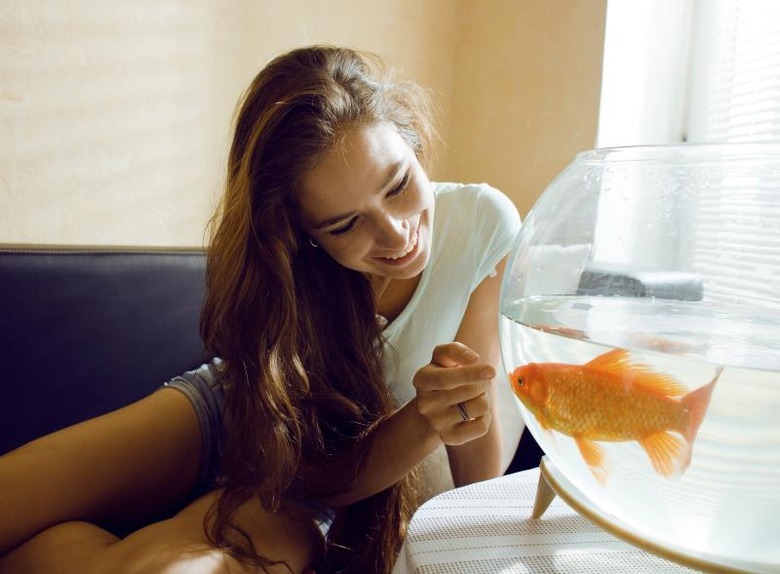What Kind Of Fish Can Live In A Bowl?
Whether you live in a minimalist space without room for a full-size aquarium setup or just like the calm of a freestanding fish display on your coffee table, a fishbowl can provide the right solution. Two things are key to having a successful fishbowl: commitment to daily maintenance of the bowl and selecting the right species of fish that can live in a bowl.
Fish that can live in a bowl
Fish that can live in a bowl
It might seem like a bowl is the easiest and cheapest way to keep fish. Although it is the least expensive way since there are no filters, heaters, and other tank accessories needed, keeping fish in a bowl isn't recommended for beginning fishkeepers because it can be a challenge for even experienced aquarists.
It's important to understand the oxygen needs of potential inhabitants. Not all fish that can live in a bowl sizewise can tolerate limited oxygen. Additionally, some species that tolerate low oxygen, such as goldfish, create a heavy nitrate load through making a lot of feces and messy eating. That means regular cleaning and water changes to prevent poisoning your fish.
Besides being able to thrive without oxygenated water, species for a bowl should be hardy and able to live in cold water since the water temperature will be at the temperature of your room. You can add an underbowl light that will help keep the temperature constant.
Single fish for fishbowls
Single fish for fishbowls
Keeping a single fish can be a bonding experience as you name and interact with your pet in his bowl. Keeping an aggressive species of fish that prefers his own space and checks the low-oxygen, cold water, and hardiness categories can be ideal. The most popular type of fish to keep in a bowl alone is a betta fish.
When you buy a betta fish at the fish store, you're likely to choose from rows of individuals housed in small containers with about a cup of water inside. Although the fish can survive if the water is changed regularly, a 5-gallon fishbowl is the perfect size for these lone fish, as it lets them swim normally and explore hiding spots in fresh plants while not suffering from toxic buildup between weekly water changes.
Paradise fish males, like bettas, are best kept on their own. This intelligent fish can make an ideal interactive pet when kept in a large bowl. A paradise fish tolerates temperatures ranging from 68 to 82 degrees as well as low oxygen conditions. They grow to a maximum size of 3 inches when kept in ideal water conditions.
Nano fish for bowls
Nano fish for bowls
If you like seeing fish swim in a school, set up your fishbowl with a school of five to eight schooling nano fish. Look for hardy, cold-water species that stay under an inch and provide a bowl that offers about a gallon of water per inch of fish that you will be adding.
Emer tetras, zebra danios, sparkling gouramis, and Endler guppies are all good choices for your fishbowl. These small, darting species add little glints of color to your fishbowl. Guppies are another hardy fishbowl choice. Just keep in mind that they'll reproduce unless you keep only fish of the same gender in the bowl.
What about goldfish?
What about goldfish?
Although the visual of a goldfish in a bowl is iconic, they're actually one of the most high-maintenance species to keep in a fishbowl, requiring near-daily maintenance. This means the responsibility level doesn't make them the best pet fish for kids. Although they tolerate cold and low oxygen, goldfish are one of the messier fish when it comes to biological load on your fishbowl. That means you're better off with a goldfish as a freshwater fish for an aquarium.
The inexpensive nature of feeder goldfish, however, can make them a low-cost way to introduce yourself to what it takes to keep a fish in a bowl. However, goldfish can grow to around 2 feet long, although they will stay much smaller when kept in a fishbowl. Some of the longest-lived goldfish were kept in carefully maintained bowls.
References
- Serendipity Wave: What Fish Can Live in a Bowl Without Oxygen? – A Complete Guide
- University of Illinois College of Veterinary Medicine: Bettas Need More Than Bowls
- Pet Keen: Can Goldfish Thrive in a Bowl? The Surprising Answer
- Badmans Tropical Fish: Paradise Fish: The Chinese Fighting Fish That Mesmerizes
